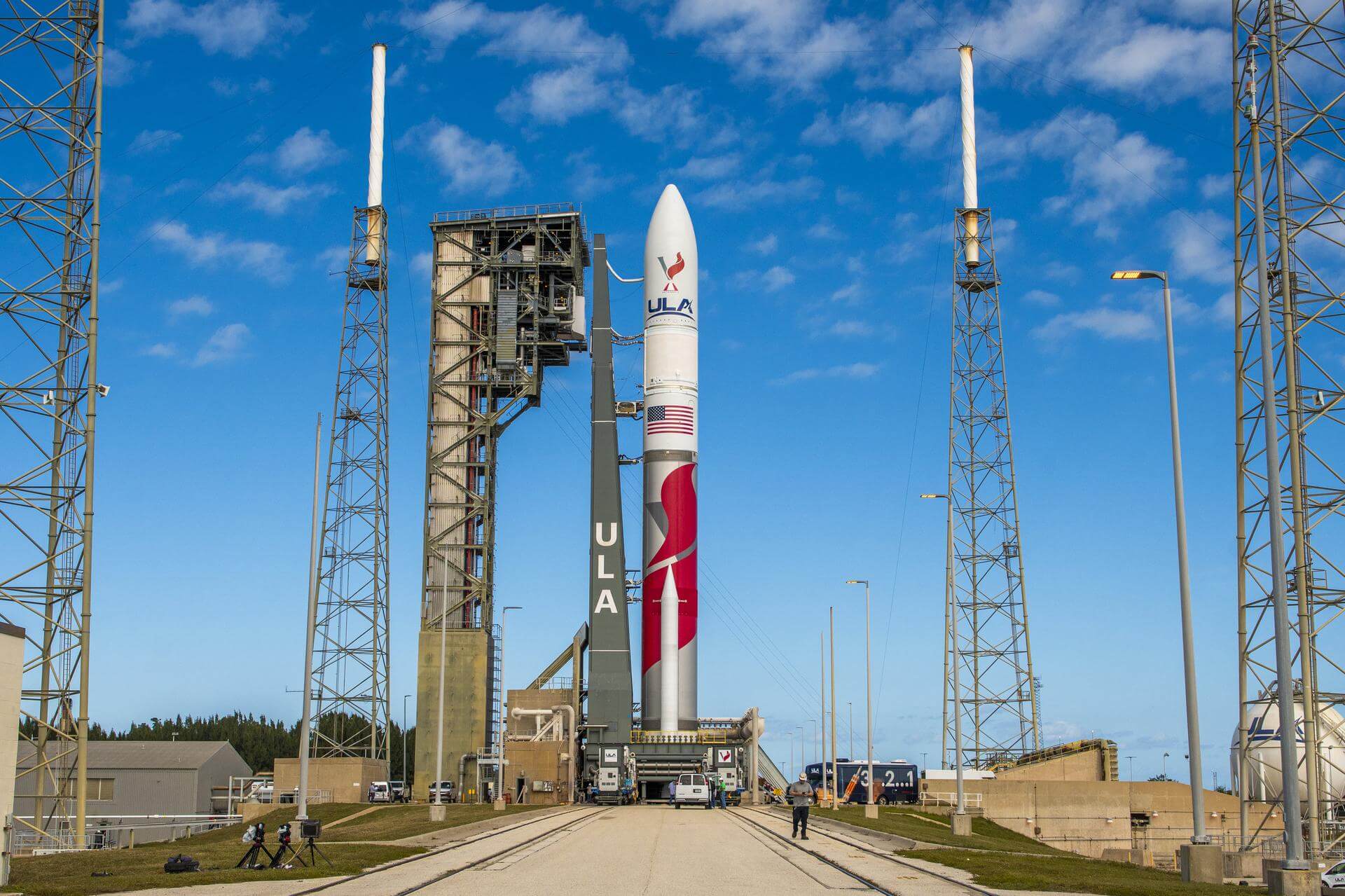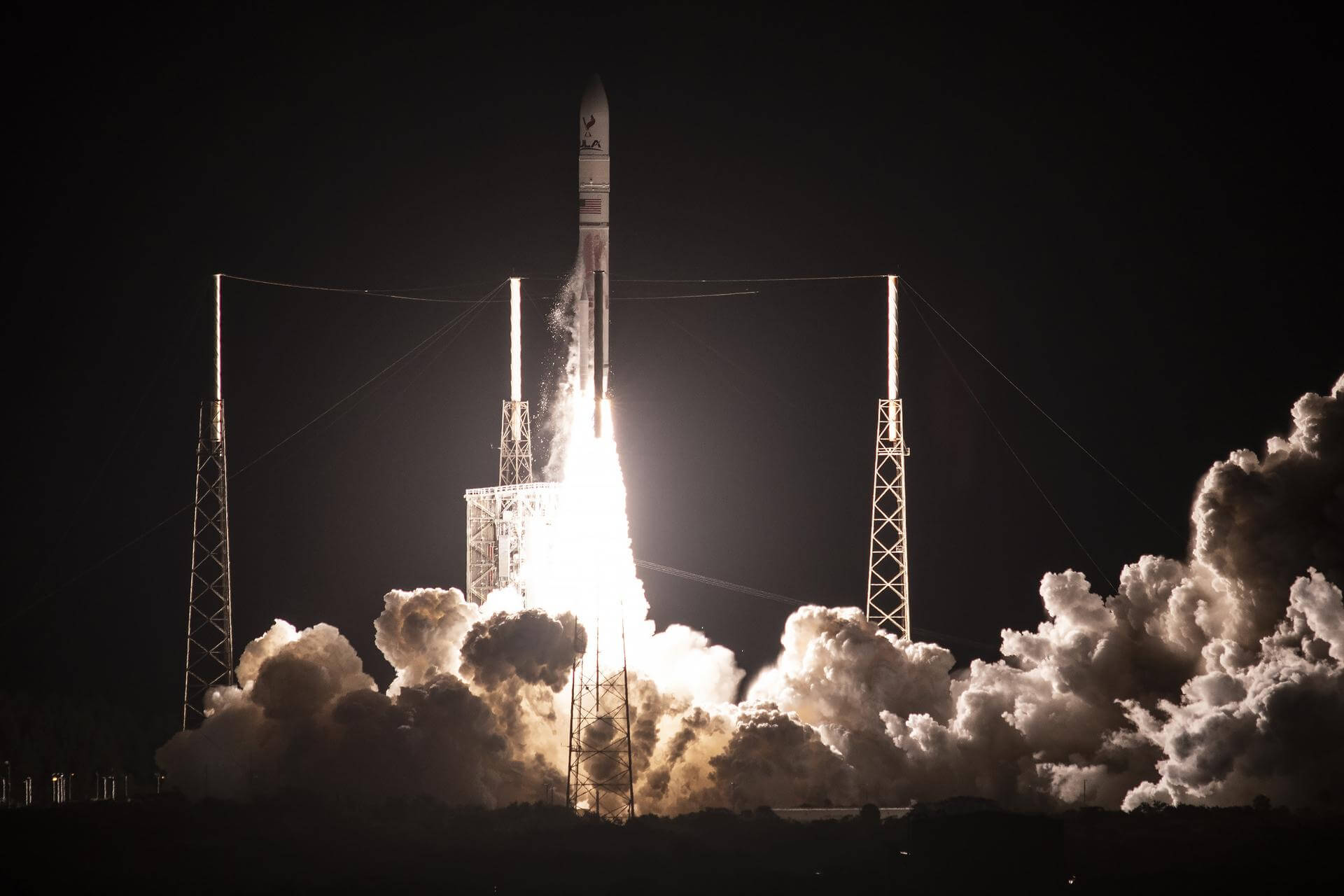
Vulcan VC2S
ActiveUnited Launch Alliance (ULA)
Jan. 8, 2024
Description
Vulcan Centaur is a two-stage-to-orbit, heavy-lift launch vehicle under development by United Launch Alliance (ULA) since 2014. It is principally designed to meet launch demands for the U.S. government's National Security Space Launch (NSSL) program for use by the United States Space Force and U.S. intelligence agencies for national security satellite launches. It will replace both of ULA's existing launchers (Atlas V and Delta IV Heavy) in this role, as these launchers are retiring.
Specifications
-
Stages
2 -
Length
61.6 m -
Diameter
5.4 m -
Fairing Diameter
5.4 m -
Launch Mass
663.0 T -
Thrust
9303.0 kN
Family
-
Name
Vulcan VC2S -
Family
― -
Variant
VC2S -
Alias
― -
Full Name
Vulcan VC2S
Payload Capacity
-
Launch Cost
― -
Low Earth Orbit
19000.0 kg -
Geostationary Transfer
Orbit
8400.0 kg -
Direct Geostationary
2600.0 kg -
Sun-Synchronous Capacity
15200.0 kg
United Launch Alliance
Commercial
CEO: Tory Bruno
ULA 2006United Launch Alliance (ULA) is a joint venture of Lockheed Martin Space Systems and Boeing Defense, Space & Security. ULA was formed in December 2006 by combining the teams at these companies which provide spacecraft launch services to the government of the United States. ULA launches from both coasts of the US. They launch their Atlas V vehicle from LC-41 in Cape Canaveral and LC-3E at Vandeberg. Their Delta IV launches from LC-37 at Cape Canaveral and LC-6 at Vandenberg.
Upcoming Spaceflights
Vulcan VC2S | GPS IIIF SV04 (USSF-88)
United Launch Alliance | United States of AmericaCape Canaveral SFS, FL, USA
TBD June, 2027
Vulcan VC2S | Certification Flight 2
United Launch Alliance | United States of AmericaCape Canaveral SFS, FL, USA
Oct. 4, 2024, 11:25 a.m.
Status: Launch Successful
Mission:
Replacement Vulcan test launch with inert payload, experiments, and demonstrations for certification with the USSF after delays caused by payload testing of the Sierra Space Dreamchaser CRS SNC-1 mission, the original planned payload. One of the GEM-63XL SRBs was observed to blown out its booster nozzle at T+37 seconds, causing reduced and asymmetric thrust during ascent, however the performance shortfall was fully compensated by Vulcan's other stages.
Heliocentric N/AVulcan VC2S | Peregrine lunar lander (Maiden flight)
United Launch Alliance | United States of AmericaCape Canaveral SFS, FL, USA
Jan. 8, 2024, 7:18 a.m.
Status: Launch Successful
Mission:
Maiden flight of ULA's Vulcan launch vehicle carrying the Peregrine lunar lander developed by Astrobotic Technology. Astrobotic was selected by NASA’s Commercial Lunar Payload Services (CLPS) program to deliver up to 14 NASA payloads to the Moon on its Peregrine lunar lander in 2022.
Lunar OrbitFalcon 9
Starlink Group 11-14
Space Launch Complex 4E - Vandenberg SFB, CA, USAA batch of 28 satellites for the Starlink mega-constellation - SpaceX's project for space-based Internet communication system.
Falcon 9
Starlink Group 6-81
Space Launch Complex 40 - Cape Canaveral SFS, FL, USAA batch of 29 satellites for the Starlink mega-constellation - SpaceX's project for space-based Internet communication system.
Electron
The Nation God Navigates (iQPS Launch 5)
Rocket Lab Launch Complex 1B - Rocket Lab Launch Complex 1, Mahia Peninsula, New ZealandSynthetic aperture radar Earth observation satellite for Japanese Earth imaging company iQPS.
Ariane 62
Sentinel-1D
Ariane Launch Area 4 - Guiana Space Centre, French GuianaSentinel-1D carries an advanced radar technology to provide an all-weather, day-and-night supply of imagery of Earth’s surface as part of the Sentine…
Long March 7A
Yaogan 46
201 - Wenchang Space Launch Site, People's Republic of ChinaClassified Earth observation satellite officially reported as for "national resources/hydrology/meteorology surveying & disaster management" purposes.


